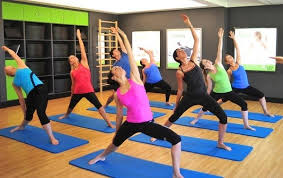With so many emerging physical workouts, yoga has been the choice of many across the world. This also signifies the demand of yoga certification in Nepal or India. Gym, aerobics, Zumba class, etc. are some of the available options. Pilates is one of those emerging trends that have taken the market by storm.
When you look at pilate or Zumba or aerobics classes, it is easier to differentiate between them; but, since yoga and pilates both are practiced on the floor, how will you differentiate between the two? Initially, they both look familiar, but there are sufficient differences to figure out. These differences can only be highlighted by a yoga or Pilates practitioner.
Let’s learn about such differences that only a practitioner knows:
Inception
Yoga, as you know, originated in India 5000 years ago and slowly branched out into different styles that offer variety such as Iyengar, Bikram, Ashtanga, Hatha, Kundalini, etc. Pilates, on the other hand, was created in the early 20th century by Joseph Pilates for rehabilitation and strengthening.
What to expect?
As yoga has been evolving since its inception and hence, follows a flexible routine; you can either practice a particular form of yoga or may combine two different yoga styles to practice. Moreover, factors that regulate a yoga class may vary on the basis of intensity i.e. powerful or gentle, slow or fast-paced, etc. Whereas, pilates classes are typically consistent. The exercises are performed lying supine, prone or on the side. Similar to yoga, there are three levels to master the pilates i.e. beginner, intermediate and advanced level but no distinct styles as such.
Methodology
While practicing yoga, one focuses on the mind, body and soul connection. It uses a combination of yoga asanas, pranayama, meditation, etc. to aid overall fitness and wellness. This can also be supported by yoga equipments such as blocks, straps, towels, blankets, etc. Pilate classes often use equipment such as the reformer, Cadillac, wunda chair, spine corrector, etc. to challenge the strength and flexibility of the body. Also, the exercises focus on muscle control, positioning the body and to develop strength, etc. For the same reason, they are used as a rehabilitation tool. In fact, physiotherapists often recommend enrolling for pilate classes when the course of a patient is over.
Intention
By the end of the session, the intention of a yoga class is to develop physical-mental awareness which comes with practice. Whereas, a pilot class is intended to determine the alignment of the body with precision and control of the movements. To learn the intentions of yoga, enroll in 200 hour yoga teacher training in Nepal.
Spiritual enlightenment
Yoga discipline combines meditation and breathing techniques to attain spiritual enlightenment. It not only helps in relieving stress and anxiety from the brain but also develops wisdom. Pilate classes, on the other hand, lack such sequences. It only operates the traditional exercises created by Joseph to help the injured athlete or any sufferer with less mobility.
If you are one of those who haven’t made up their mind about yoga or pilates; it is suggested to first set an intention. It will help you choose the right thing. For instance, if you want something that focuses on muscle formation in the core, spine, buttocks, and thighs; choose pilates. In order to bring mindfulness and overall wellness; yoga is the workout for your type. You can try classes for each of them to choose the best for self.
You can also practice both, for a lean body along with mindfulness for overall benefits to the body; similar to what is practiced during yoga certification in Nepal.

